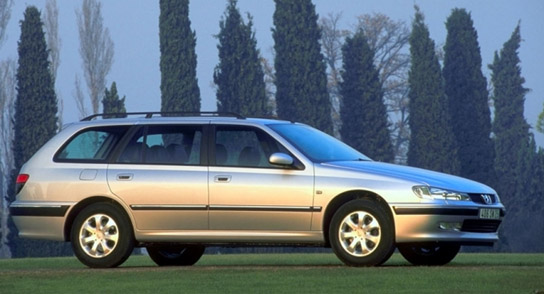 French car manufacturers have always appreciated the advantages of estate cars. Like German companies, they introduced them to their offer as early as the 1950s, transplanting to the European market the idea of an increased luggage space and a rear lid that opens together with the windshield. This was also the case with Peugeot, which, starting with the model 403 over forty years ago, continues this idea to this day, offering two models in two different vehicle classes.
French car manufacturers have always appreciated the advantages of estate cars. Like German companies, they introduced them to their offer as early as the 1950s, transplanting to the European market the idea of an increased luggage space and a rear lid that opens together with the windshield. This was also the case with Peugeot, which, starting with the model 403 over forty years ago, continues this idea to this day, offering two models in two different vehicle classes.
Among the C-segment estate cars is the Peugeot model 306 Combi, shown for the first time in 1997 r., four years after the hatchback version and two years after the sedan. Body 306 The station wagon is longer than the basic version by almost 320 mm and close 80 mm from the four-door, with the same wheelbase. However, the increase in luggage space was achieved only in relation to the hatchback. The trunk of the sedan has 463 dm3 and is slightly larger than the estate car. However, the space behind the rear seat in a station wagon of this class should be considered spacious enough. In addition, it is arranged quite attractively. The wheel arches take up little space, and on both sides of the rear section was spacious, lockable compartments. The trunk floor was covered with moldings, to facilitate the insertion of larger items. The whole thing is nicely finished with felt carpets. In the asymmetrically divided sofa, both the backrest and the seat are folded.
After folding the couch, the floor remains completely flat. Luggage can be covered with a practical one, repeatedly broken shelf. The spare wheel is mounted underneath, under the boot floor. Although, gets very dirty and is exposed to corrosion, but its extraction does not require cumbersome unpacking.
Peugeot engines offer 306 The estate car includes two gasoline engines and two diesel engines. The version with a gasoline engine seems to be the most interesting 1,6 dm3. It offers good performance and has a relatively good price. Due to the dynamics and low fuel consumption, the most recommendable version is the very modern version, HDI diesel engine, working in the common rail system.
In the D segment, Peugeot presents a station wagon built on the basis of the model 406. It was shown for the first time in the fall 1996 r., a year and a half after the sedan. Is about 140 mm longer than the four-door version, with the same wheelbase, and has a much larger trunk. It is one of the largest station wagons in this class of vehicles. The finish of the luggage compartment is even better than in the "306", thanks to the velor upholstery. There are no moldings on the boot floor, but there are also handles for attaching items. Small wheel arches do not take up space for luggage, and on the sides in the rear part is designed voluminous, lockable compartments. The wheel is hidden in the embossing under the cargo hold floor, it is accessible from the inside after lifting a special cover. Therefore, tire failure requires the removal of all luggage. The grille covering the luggage space is divided into two parts of a similar size. A rigid shelf is an element of the front part of the trunk, from it a roller blind slides out, masking the rest of the surface. The rear seat, similar to "306", It is divided asymmetrically and has a foldable backrest and seat. After it is folded, the floor remains flat up to the lower edge of the loading opening.
Peugeot 406 The estate car is offered with two gasoline and two diesel engines, with a spark-ignition power unit with a capacity of 1,8 dm3 can be found with a factory fitted gas installation (LPG). Engine 1.8 drives the primary, the cheapest version 406 Combi. It has good performance, if you take into account the utility values of the car, but the economy of operation can only be considered in the case of a gas installation. HDI engines provide very low fuel consumption while ensuring good performance, but as in the model 306 the versions powered by them are much more expensive than the petrol ones.

Peugeot 306 – 406 combi
Visited 147 times, 1 visit(s) today